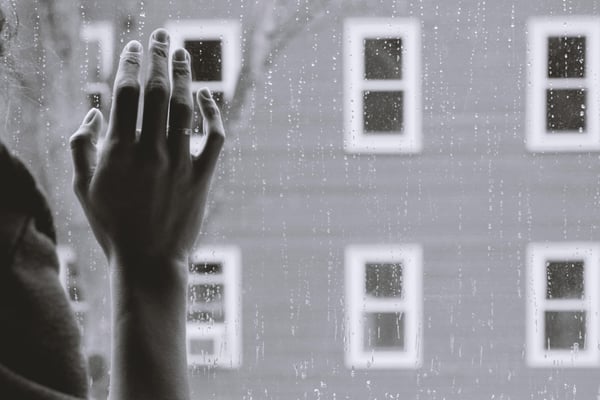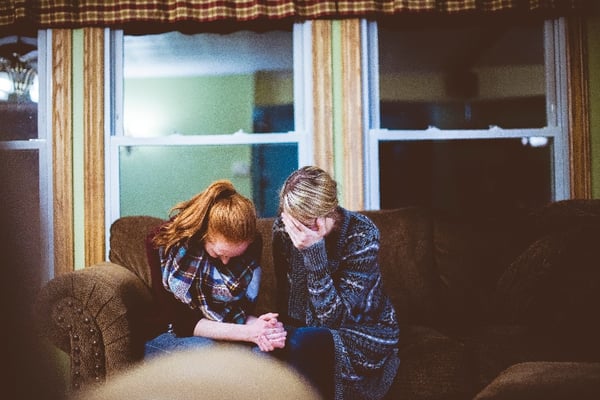Depression, Anxiety, or Just a Bad Day?
Understanding our student's mental health needs is so important. Today we are going to clearly define depression and anxiety and provide resources.
BY Amy Kopecky
Life in high school can be notoriously hard. Increased pressure to perform academically, along with worries about college, family expectations, impressing peers, navigating romantic relationships, and excelling in sports or extracurricular activities can weigh down the hearts and mind of even the strongest students. Add to that the 24/7 feed of social media, potentially with negative or hurtful comments, and the pressure to live the perfect life, and many students begin to experience symptoms that make them wonder if they are clinically depressed or anxious.

Almost every student feels sad, fatigued, disinterested, worried or scattered at some point. Maybe even all of the above. Most of the time, such feelings are normal reactions to the pressures of life. Sometimes, however, there is an actual mental health issue to face. Let’s define what it means to be clinically depressed or anxious, versus just having a bad day, and then move into some suggestions for staying mentally healthy and happy.
What is Depression, Officially?
Depression is a serious medical illness that affects lots of people. In fact, over 16 million adults in the US face a major depressive episode each year. Depression is a diagnosable mood disorder that goes beyond the normal bouts of sadness most of us face. When those normal swings into sadness don’t go away after a few days, it might be something more serious, like clinical depression, especially if it is affecting the normal function of your life.
According to the American Psychiatric Association, common symptoms of clinical depression include:
- Feeling sad or having a depressed mood
- Loss of interest or pleasure in activities once enjoyed
- Changes in appetite — weight loss or gain unrelated to dieting
- Trouble sleeping or sleeping too much
- Loss of energy or increased fatigue
- Increase in purposeless physical activity (e.g., inability to sit still, pacing, handwringing) or slowed movements or speech (these actions must be severe enough to be observable by others)
- Feeling worthless or guilty
- Difficulty thinking, concentrating or making decisions
- Thoughts of death or suicide
Many of these symptoms come and go for all types of people who are not clinically depressed. The difference is, if they last for more than 2 weeks and result in a change in your normal day to day functioning, it might be something more than a mood. Being diagnosed with depression is nothing to be ashamed of. It is a very common condition, and is treatable. We’ll share more about how to get help below.
How About Anxiety?
There are several types of anxiety disorders, and it is possible to have more than one type of anxiety going on at the same time. Examples of anxiety categories include:
- generalized anxiety disorder
- social anxiety disorder (social phobia)
- specific phobias
- separation anxiety disorder
According to the Mayo Clinic, “experiencing occasional anxiety is a normal part of life. However, people with anxiety disorders frequently have intense, excessive and persistent worry and fear about everyday situations. Often, anxiety disorders involve repeated episodes of sudden feelings of intense anxiety and fear or terror that reach a peak within minutes (panic attacks).”
It is common for symptoms to start during childhood and follow a person into teen and adult years. Anxiety can become especially intense as students enter high school, because of all the increased pressures, including school, sports, work, relationships and social media. With therapy, drugs, behavior and situational changes, anxiety can be controlled, in many cases for a lifetime.

How to Get Help for Depression or Anxiety
If you or a loved one is experiencing symptoms of depression or anxiety, the first step towards getting the help you need is to recognize those symptoms. So, reading an article like this one, and sharing it with friends and family is a great step toward raising awareness and normalizing mental health interventions. If you realize you or someone you love is experiencing depression or anxiety, here are some things you can try:
- Pray for God’s assistance
- Talk to a trusted adult, like a pastor, parent, advisor or teacher
- Explore these mental health resources for teens
- Make an appointment with a mental health provider
- Try and remember you are a unique human being made in the image of God. He loves you and gives you only what you can handle. Some people find comfort in knowing that depression or anxiety could be part of God’s plan to use them as an example to help others.
Remember Psalm 34:17-18, “When the righteous cry for help, the Lord hears and delivers them out of all their troubles. The Lord is near to the brokenhearted and saves the crushed in spirit.”




